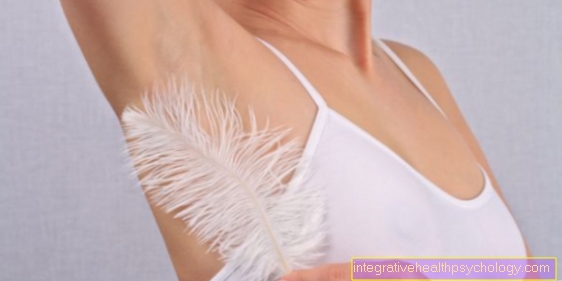Backhand with both hands
introduction
The backhand, as a basic stroke in tennis, is much less popular with players than the forehand. Since the backhand of right-handers is hit on the left side of the body, it does not allow the player to have free arm freedom. "The tennis player stands in his own way when he hits". Both in the performance-oriented and in the leisure sector you can find representatives of the one-handed backhand as well as the two-handed. The differences are more in the type of stroke. For advanced players, the backhand is increasingly played as a topspin variant. In the beginners' area, the backhand slice is played more and more. This type of shot is similar to backhand volley.
tactics
Similar to the forehand, should be the backhand at tennis be played as topspin if possible.
If you find yourself under pressure during the rally, the ball can be played as a slice in order to take speed out of the game and to return to the starting position yourself. The one-handed backhand allows players a greater range, but due to the more coordinatively demanding movement, it is played less often. The backhand slice, on the other hand, is always played with one hand. It can often be seen in beginners that the backhand is run around to hit a forehand. However, this opens up your own half of the field and extends the walking paths.
Backhand technique
Backward movement
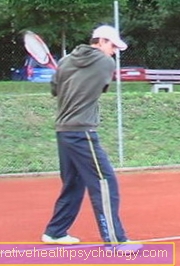
- The racket is held with a backhand grip
- The player stands on his side with his right foot in front. The tip of the right foot points to the left net post
- The upper body points to the side
- The load on the body weight is on the right foot
- Both hands are on the racket handle, the racket is far behind the body
- The eyes are on the ball
Surcharge movement
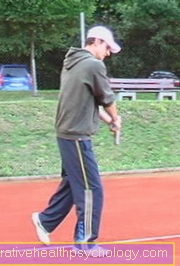
- The hammer movement begins on time
- The knee joint of the right foot is extended at the beginning of the strike movement
- The upper body is turned towards the tennis court. The load is on the right foot
- The tennis racket is accelerated towards the meeting point
Meeting point of the ball
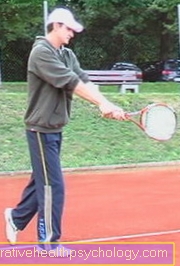
- The tennis ball is hit on the side in front of the body in a forward / upward movement (compare forehand).
- Both arms are almost straight
- The upper body is fully turned up at the time of the meeting
- The clubface is almost parallel to the net at the meeting point.
Swing phase
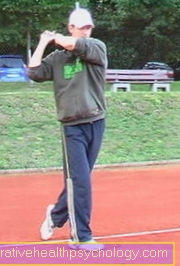
- The club is swung out over the left shoulder
- The upper body is turned to the right.
- The load is on the right foot.
- The body is brought into balance
Typical mistakes
Typical backhand mistakes
- The tennis racket is not held with a backhand, but with a forehand grip
- Consequence: excessive palmar flexion in the wrist, overstressing the wrist
- Only slight rotation of the upper body
- Consequence: no body tension, less acceleration path, too slow slamming movement
- Correction: turn upper body, throw medicine ball sideways
- Backhand swing movement too late
- Consequence: meeting point behind the body and thus loss of control
- Correction: targeted, early recovery
- No lowering of the club head in the stroke movement
- Consequence: The club is not guided upwards and there is no topspin
- Correction: Touch the ground with the club when striking
- Supine position
- Result: poor control, stick open at the point of impact, loss of speed
- Correction: take a step into the field after hitting the ball
- No swing over the shoulder
- Consequence: cramping of the wrist, unnecessary muscle exertion, no smooth stroke movement
further information
more information about tennis can be found here:
- tennis
- surcharge
- forehand
- One handed backhand
- Volley forehand
- Volley backhand
- smash


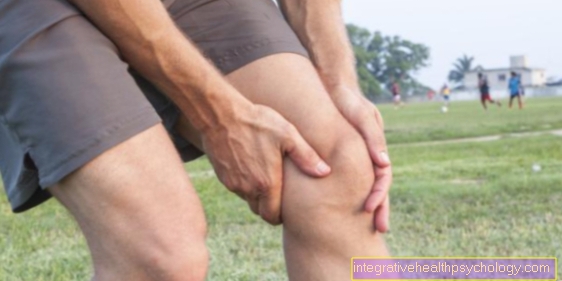



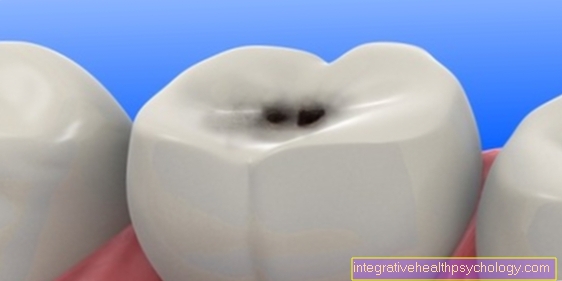











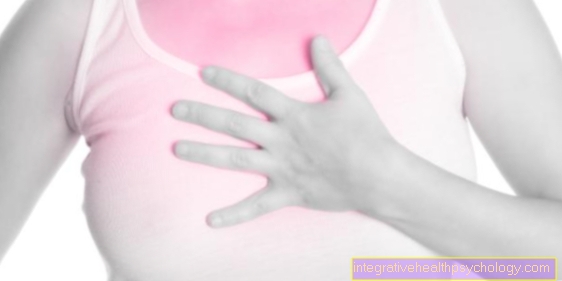
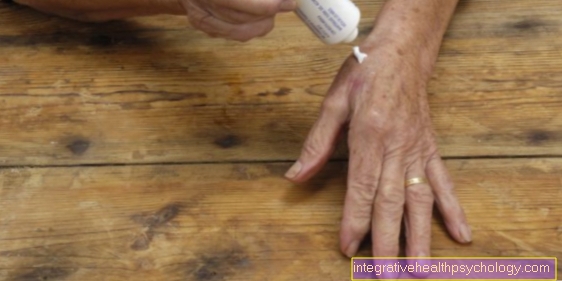
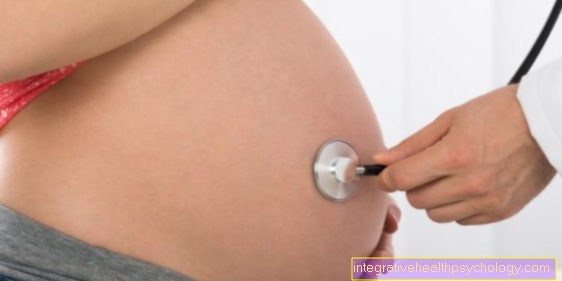


.jpg)



